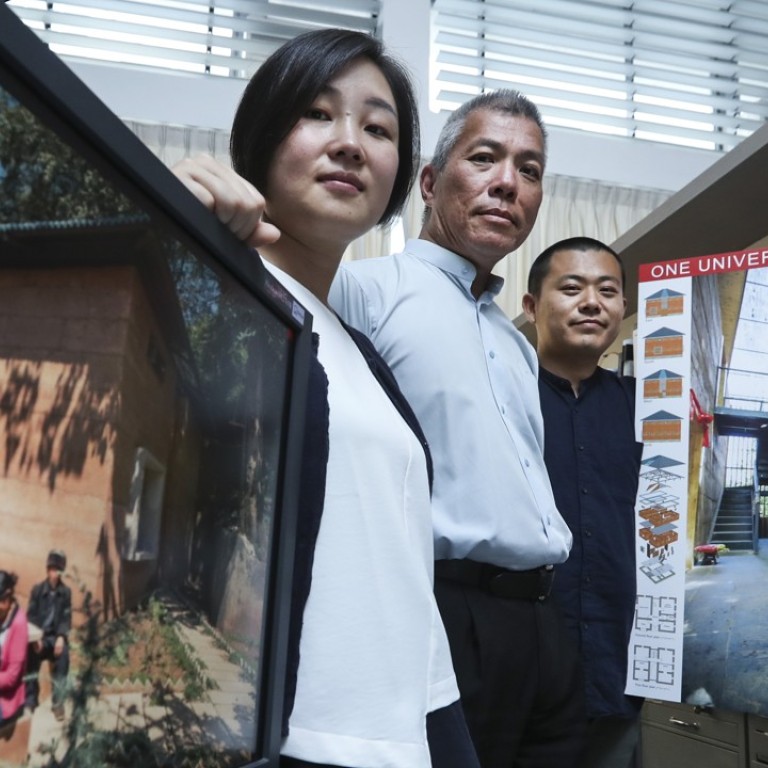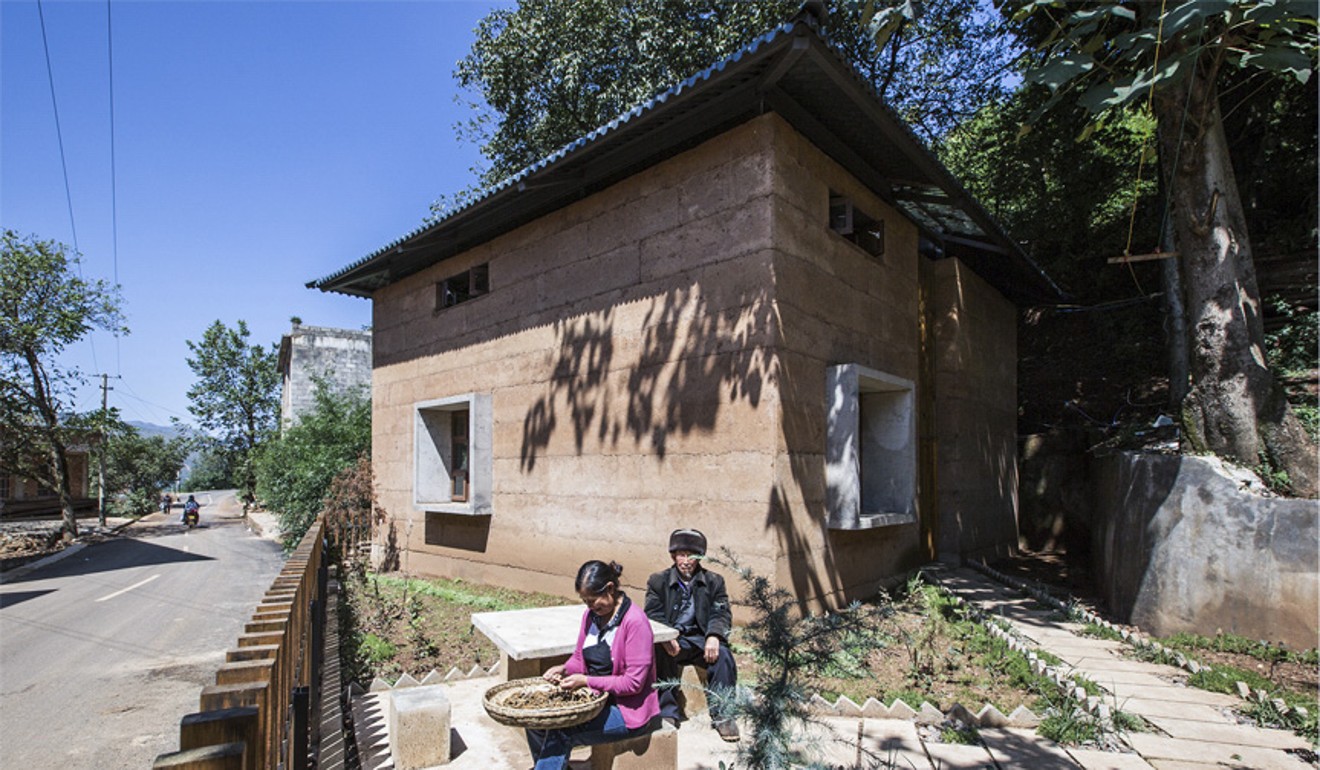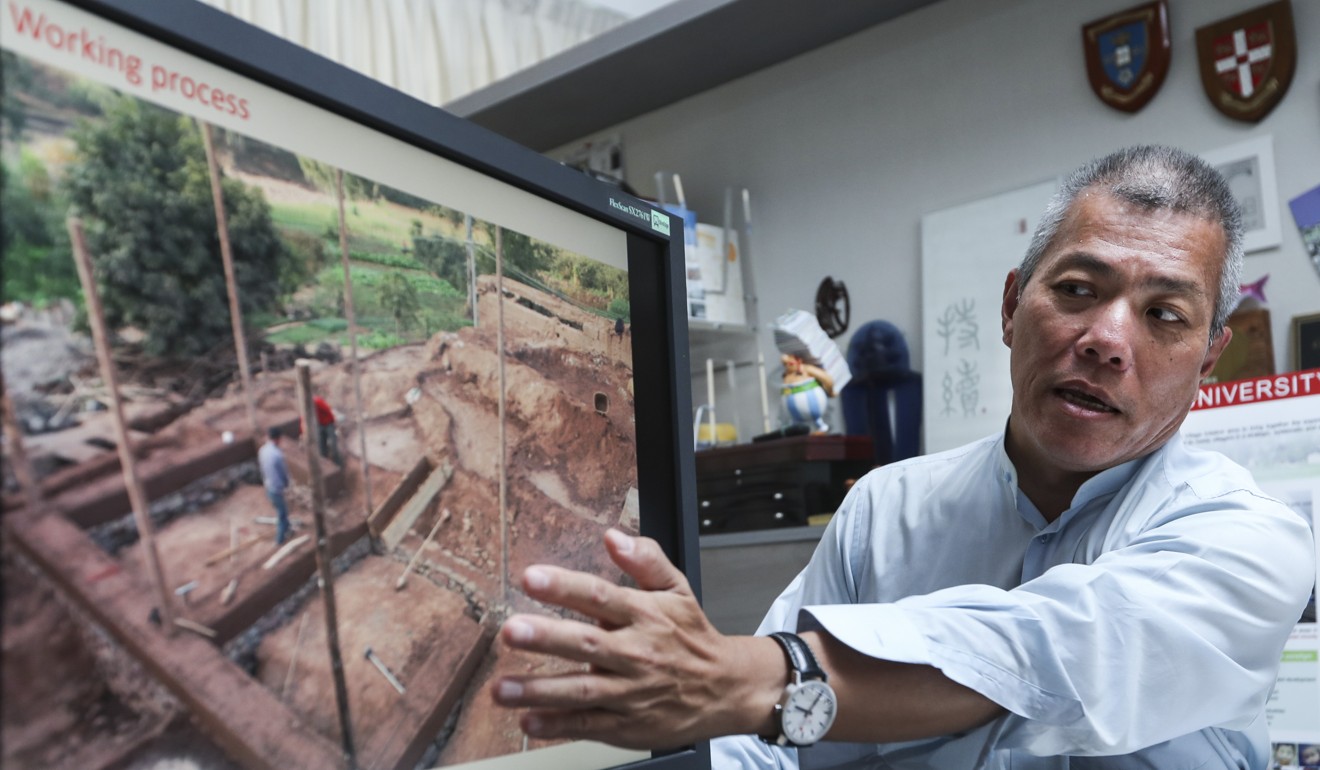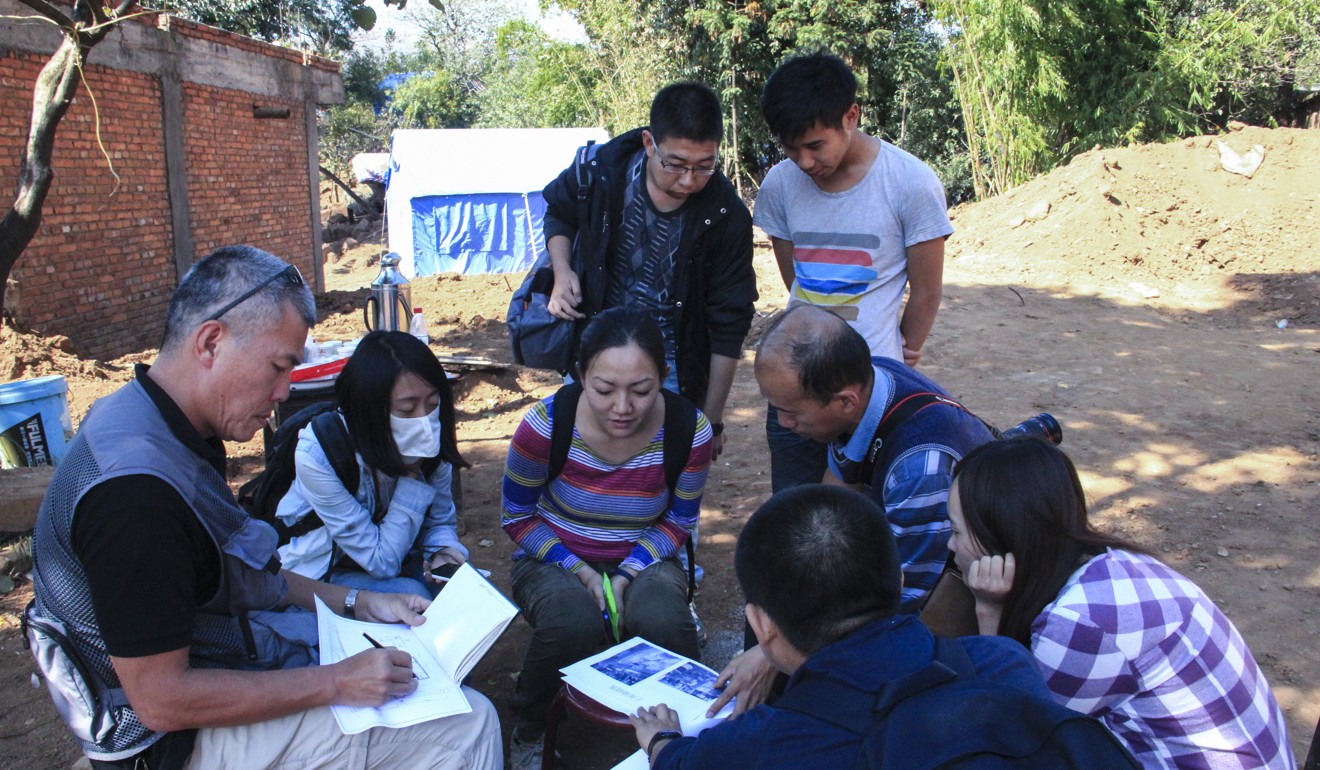
An earthquake-proof house made of clay? Inside the Yunnan home Hong Kong architects built from rubble
Team from Chinese University constructs rammed-earth structure using local clay that can withstand a magnitude 9 quake in hope of encouraging more such projects
After a magnitude 6.1 earthquake reduced a small village in southwest China to rubble in 2014, its residents no longer thought clay houses were strong enough to withstand natural disasters.
That is until a team of architects from a Hong Kong university built a clay house with a modern construction technique that can withstand magnitude 9 earthquakes.
Yunnan earthquake death toll tops 400 as barrier lakes pose new threat to survivors
In earthquake-prone Yunnan province, the team from Chinese University made use of the mountains of red earth from collapsed homes to rebuild a house for an elderly couple who had been living in a makeshift tent in Guangming village for a year.
Unlike traditional earthquake-proof buildings made of bricks, concrete or steel, the salvaged materials allowed them to save the cost of importing expensive construction materials.
“After the earthquake, the demand to build houses pushed up labour and material costs. But how were these villagers going to be able to afford them? So we tried to think of ways we could use what was already existing to rebuild,” team leader Professor Edward Ng Yan-yung said.

The design caught the eye of judges for this year’s Architectural Review House Awards. The team placed first among 250 entries worldwide, even outshining renowned Japanese architect Kengo Kuma, whose work portfolio includes the Tokyo Olympic Stadium, which is currently being built.
The 1,500 sq ft two-storey house, which took four months to build in 2015, cost HK$140,000 – 40 per cent less than what it would have cost if bricks and concrete were used.
Sichuan earthquake stirs up painful memories of 2008 disaster
The team tested out different ratios of clay, sand, straw and cement to improve the structural stability of the walls. The mixture was then repeatedly rammed and compressed between two panels using a mechanical pounder to form walls.
Using this rammed-earth technique with a specific mixture consistency meant that the walls were more structurally stable and less likely to crumble than traditional walls mixed with stone, which tends to give way.
The house eventually passed an earthquake simulation test of up to magnitude 9 carried out at Kunming University of Science and Technology.
The move to upgrade villages with earthquake-proof structures is crucial in a region plagued by tremors. Just last Tuesday, a magnitude 7 earthquake hit neighbouring Sichuan province, killing dozens and forcing the evacuation of tens of thousands of people.

Project convenor Wan Li said the construction method would be suitable only for rural villages in Yunnan and Sichuan that had this specific type of clay house built from local materials.
However, one of the biggest challenges was resistance from the community.
“The county chief thought it was ridiculous that we were still using clay to build houses. To them, they thought building with concrete or bricks was the symbol of modernity and progress. So he threw a brick at the house, but it broke and he was so shocked,” Ng said.
The science behind the Sichuan and Xinjiang earthquakes
Aside from its anti-seismic properties, the humble material has another added benefit. By using clay, a thermally sensitive material, houses are warmer than concrete buildings in winter and cooler in summer.
The house in Guangming is one of the first in a HK$35 million project that aims to help villagers in rural China rebuild affordable homes after an earthquake.

“It’s important that villagers take part in the rebuilding process and that the methods are simple enough to learn so they can pass them on,” Ng said.
Since the first prototype was set up in 2015, villagers have gone on to build four more houses of their own.
But Ng has more ambitious plans. “Maybe in two to three years when this method matures and we have more resources, we can expand it to more rural areas in mainland China. But what I really actually hope is that it can affect the country’s policies.
“We can build maybe a few hundred more houses, but if the government can adopt our building methods into their formal policies, they can build hundreds upon thousands of these. That’s the only way to help the country,” Ng said.

